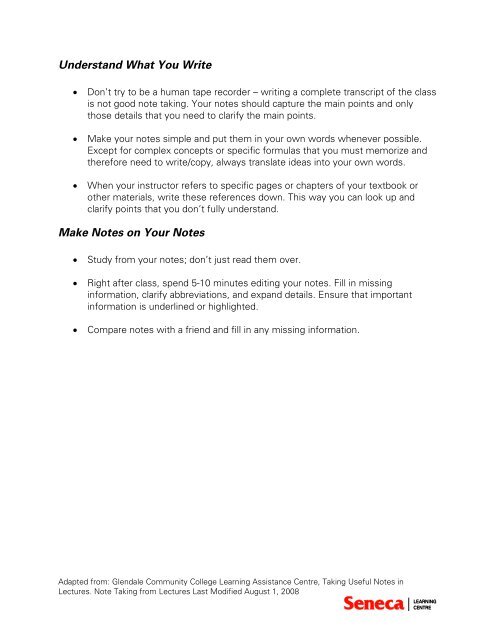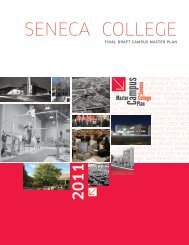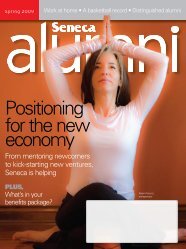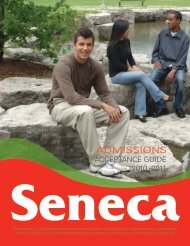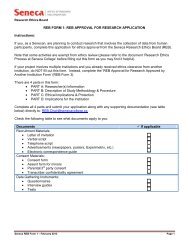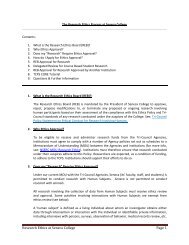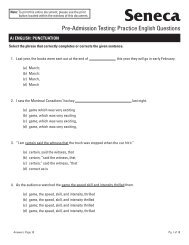Taking Notes from Lectures - Seneca College
Taking Notes from Lectures - Seneca College
Taking Notes from Lectures - Seneca College
Create successful ePaper yourself
Turn your PDF publications into a flip-book with our unique Google optimized e-Paper software.
Understand What You Write<br />
• Don’t try to be a human tape recorder – writing a complete transcript of the class<br />
is not good note taking. Your notes should capture the main points and only<br />
those details that you need to clarify the main points.<br />
• Make your notes simple and put them in your own words whenever possible.<br />
Except for complex concepts or specific formulas that you must memorize and<br />
therefore need to write/copy, always translate ideas into your own words.<br />
• When your instructor refers to specific pages or chapters of your textbook or<br />
other materials, write these references down. This way you can look up and<br />
clarify points that you don’t fully understand.<br />
Make <strong>Notes</strong> on Your <strong>Notes</strong><br />
• Study <strong>from</strong> your notes; don’t just read them over.<br />
• Right after class, spend 5-10 minutes editing your notes. Fill in missing<br />
information, clarify abbreviations, and expand details. Ensure that important<br />
information is underlined or highlighted.<br />
• Compare notes with a friend and fill in any missing information.<br />
Adapted <strong>from</strong>: Glendale Community <strong>College</strong> Learning Assistance Centre, <strong>Taking</strong> Useful <strong>Notes</strong> in<br />
<strong>Lectures</strong>. Note <strong>Taking</strong> <strong>from</strong> <strong>Lectures</strong> Last Modified August 1, 2008


